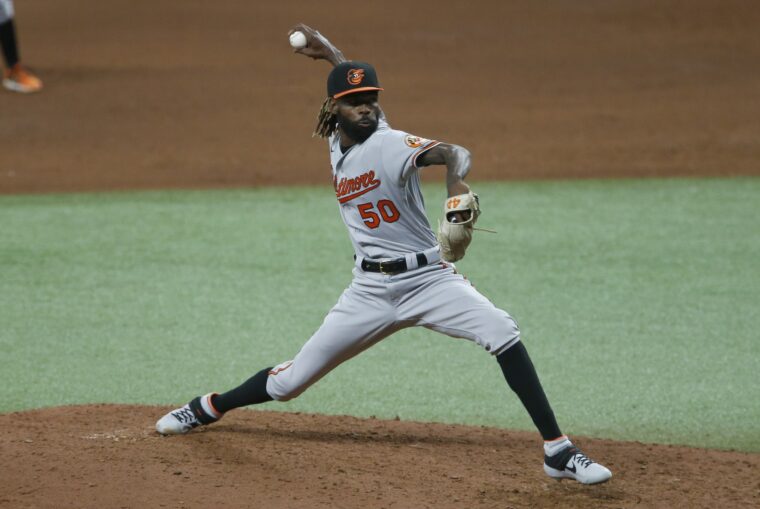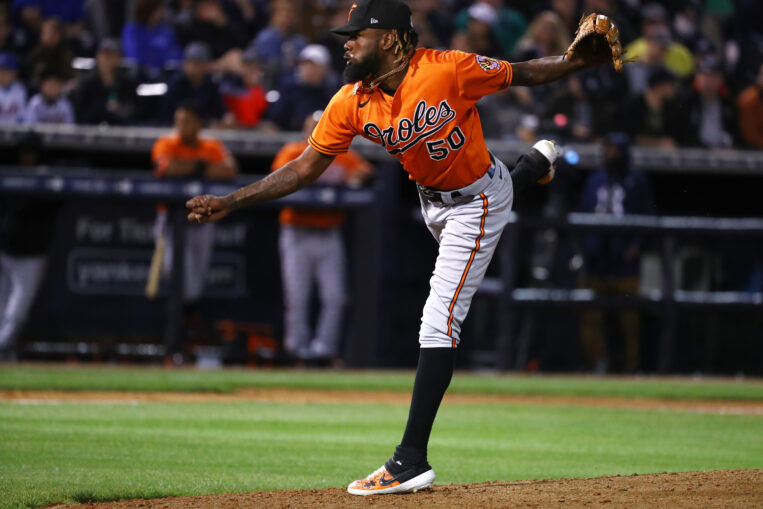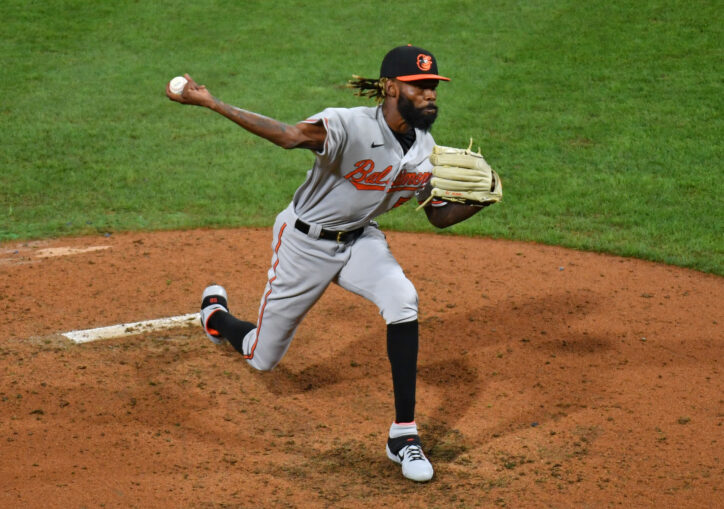
With the New York Mets currently sitting five games below a .500 winning percentage, general manager Brodie Van Wagenen would’ve likely been forced to sell off some of his team’s assets before the trade deadline. Luckily, the 2020 campaign is far from a normal season, allowing them to become buyers rather than sellers.
While a few teams called to ask about the availability of closer Edwin Diaz, Van Wagenen decided to add a powerful arm to the Mets’ bullpen instead of subtracting one of their most notable relievers. Acquiring one of the top relief pitchers on the market, they swapped prospect Kevin Smith along with cash or a PTBNL for Miguel Castro.
Despite losing last year’s Minor League Pitcher of the Year award winner, the Mets were able to add another quality arm to their staff, who’s under team control through the 2022 season. At just 25-years old, the now former Oriole is enjoying the best statistical performance of his young career and should be able to make a positive impact in Queens.
Over his 16 appearances, Castro has compiled 15 2/3 innings, producing four holds, 4.02 ERA, 3.71 FIP, 2.60 xFIP (career-low), 90 ERA-, 81 FIP-, 59 xFIP-, 1.40 WHIP, .266 OPP AVG, 34.3% strikeout rate (career-high), 7.1% walk rate, 17.5% LD rate, 55% GB rate, 27.5% FB rate, and a 0.2 fWAR rating.
Considering these impressive results, the right-hander could prove to be a huge boost through the final month of the regular season.
While no one is expecting him to become a shutdown closer, although that’d certainly be a welcomed surprise, the Dominican native is capable of serving as a reliable pitcher late in games. So, this trade could be considered a major win for New York.
For a struggling Mets’ bullpen that owns the eighth-highest walk rate (11.3%), and is tied for the third-most blown saves (six) along with the fourth-most losses (eight, including three coming in their last four games) in the majors.
Castro should help improve those metrics through the rest of the season. In addition, the 6-foot-7 hurler will also enhance the team’s ability to induce high amounts of ground balls (46.5% GB rate, third-highest), strikeouts (25.3% strikeout rate, eighth-highest), and limit line drives (20.2% LD rate, tied for ninth-lowest) against them as well.

If Seth Lugo remains a starter and Diaz continues struggling in the ninth inning, there’s a chance Castro could receive some closing opportunities, as he’s recorded seven career saves (four with Toronto and three with Baltimore) over his six seasons in the majors. With that said, he also owns 10 career blown saves, so closing might not be the ideal role for the towering righty.
Even though he’s not suited for the ninth inning, at least for now, the promising arm has enjoyed plenty of success pitching in the seventh inning since 2018. Castro could help the Mets continue dominating in that role this season, as their bullpen owns the seventh-lowest ERA (2.25) and xFIP (3.73) throughout the in the seventh inning.
Over his last three and a half seasons, Castro has completed 42 innings, posting a 2.14 ERA, 3.39 FIP, 4.83 xFIP, 1.19 WHIP, .182 OPP AVG, 19.3% strikeout rate, 14% walk rate, 15.2% LD rate, 54.5% GB rate, zero home runs, and a 31% hard-hit rate.
Along with being effective during the seventh inning, the former starter has also proven to be reliable during extra innings throughout his career as well. As a result, he could also be utilized during these types of high-leverage situations if they present themselves, which have happened three separate times this season.
Since the 2015 campaign, Castro has thrown 12 2/3 innings beyond the ninth inning, generating a 2.84 ERA, 3.09 FIP, 4.61 xFIP, 1.18 WHIP, .188 OPP AVG, 20% strikeout rate, 10.9% walk rate, 16.2% LD rate, 54.1% GB rate, zero home runs, along with a measly 21.6% hard-hit rate.

Credit: Kim Klement-USA TODAY Sports
Considering Castro has spent the last four seasons on a rebuilding Orioles team, his ability to continue to develop and grow as a pitcher has been extremely impressive. So, how has he been able to produce such stellar results?
Well, the majority of his success should be credited to his devastating slider.
In 2018, his breaking ball performed effectively, averaging 84.3 mph, 6.7 inches of break, and 2,877 rpm. In addition, it allowed a .182 AVG, .214 xAVG, .208 SLG, .267 xSLG, .200 wOBA, .245 xwOBA, 33.7% strikeout rate, 34.5% whiff rate, 22.3% chase rate, 28% LD rate, 44% GB rate, and an 18% hard-hit rate against it.
While some pitchers would settle for these productive results and keep everything status quo, Castro didn’t follow that same route and he continued tweaking his slider in 2019 and in 2020 as well. Witnessing his determination come to fruition, the youngster has been able to take his primary strikeout weapon to the next level so far this season.
Through his 16 appearances, the hard-throwing righty has increased his slider’s velocity up to 86 mph, it’s also averaging 8.2 inches of break (1.5 increase since 2018), and it’s tied for the third-highest average spin rate (2948 rpm) among all pitchers who’ve thrown at least 50 pitches in 2020.
Additionally, he’s also surrendered a .176 AVG, .110 xAVG, .235 SLG, .133 xSLG, .203 wOBA, .140 xwOBA, 55.6% strikeout rate, 45.7% whiff rate, 32.1% chase rate, 14.3% LD rate, 71.4% GB rate, and zero hard-hit balls against it.
While the Mets desperately needed to acquire at least one starting pitcher before the trade deadline, adding a rising star to their bullpen could help them turn things around in September. At the very least, they shouldn’t surrender as many leads late in games.
Needing to spark a second-consecutive playoff push during the final month of the regular season, the Mets are hopeful they’ll be able to find a way to sneak into the last playoff spot in the NL before it’s too late. If not, things could become a lot more active for this team during the upcoming offseason.
















